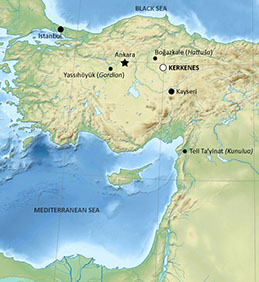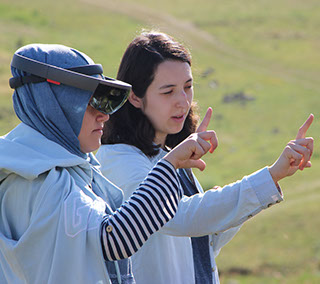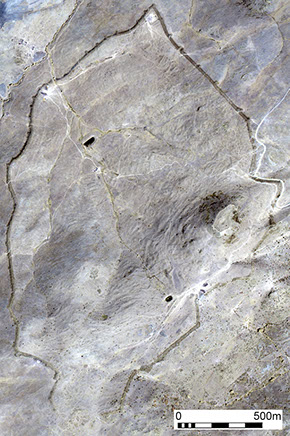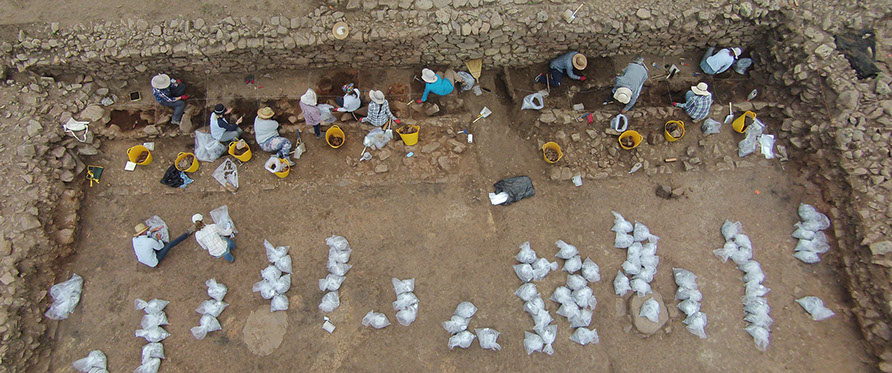
Located atop a granite batholith dominating the surrounding landscape of gently rolling hills and small valleys, the Iron Age city of Kerkenes has puzzled archaeologists for decades. Its unusual position within the bend of the Kızılırmak river in central Anatolia, in what used to be the heartland of the Bronze Age Hittite Empire, makes this extraordinarily large single-period site an historical anomaly. The 7th and 6th centuries BCE, during which the city thrived, remain somewhat shrouded in mystery, for the archaeological record in the region is sparse and almost completely devoid of written records.
Measuring 271ha, Kerkenes is the largest pre-Hellenistic site in Turkey. The dense urban fabric enclosed by a 7km-long stone wall that closely followed the complex topography of the mountaintop is pierced by seven gates which gave access to the different areas of the city. The site was only inhabited for a short period of time – three generations or so – and its story ended in fire and destruction at the hands of foreign invaders, after which it lay abandoned for centuries until small groups of Hellenistic, Roman, and Byzantine settlers occupied limited portions of its ruins.
Academic work at the site began in the 1920s, when archaeologists from the nearby Alishar Expedition explored the walled settlement over the course of three very short missions, the first two to map the city, then to excavate test trenches across its surface and into its necropolis. Not having found evidence for the Hittite presence they were seeking, they abandoned the site. Work resumed in 1993 when Geoffrey and Françoise Summers initiated the modern Kerkenes Project. Upon Summers’ retirement, Scott Branting from the University of Central Florida took over the project in 2015. From its inception, the Kerkenes Project has relied on a vast array of geophysical and geospatial techniques to gather information on the truly enormous ancient city. Gradiometry and GPS surveys cover all accessible parts of the city, whereas the electrical resistance survey is still ongoing and forms the core of the Kerkenes geophysical fieldschool. Current excavations began in 1996 and have since taken place on an almost yearly basis. Although many areas of the site were explored, the main investigated features are the so-called Cappadocia Gate, the Palatial Complex, and Urban Block 8. Work in the Palatial Complex and Cappadocia Gate, conducted by Summers, concluded in 2005 and 2011 respectively, while Urban Block 8 is the focus of current work by Branting and his team, who to date have exposed over a quarter of the 6000m2 walled enclosure.
The combination of remote sensing and excavation has revealed the intricacies of an Iron Age mountaintop capital. Phrygian inscriptions and religious iconography point to a western presence in the city, but many aspects of its material culture and architectural tradition suggest a mixed origin for the inhabitants. The goal of the Kerkenes Project is to combine traditional archaeological techniques such as dendrochronology, ceramic analysis, zooarchaeology, and paleobotany with more advanced tools like photogrammetry, simulation, 3D visualisation, and augmented reality to elucidate those mysteries.
For more information about the Kerkenes Project, visit our website.
Director:
Dr. Scott Branting, Department of Anthropology (University of Central Florida)
scottbranting@ucf.edu
Assistant Director and UofT contact:
Dominique Langis-Barsetti, Department of Near and Middle Eastern Civilizations (UofT)
dominique.langis.barsetti@mail.utoronto.ca



